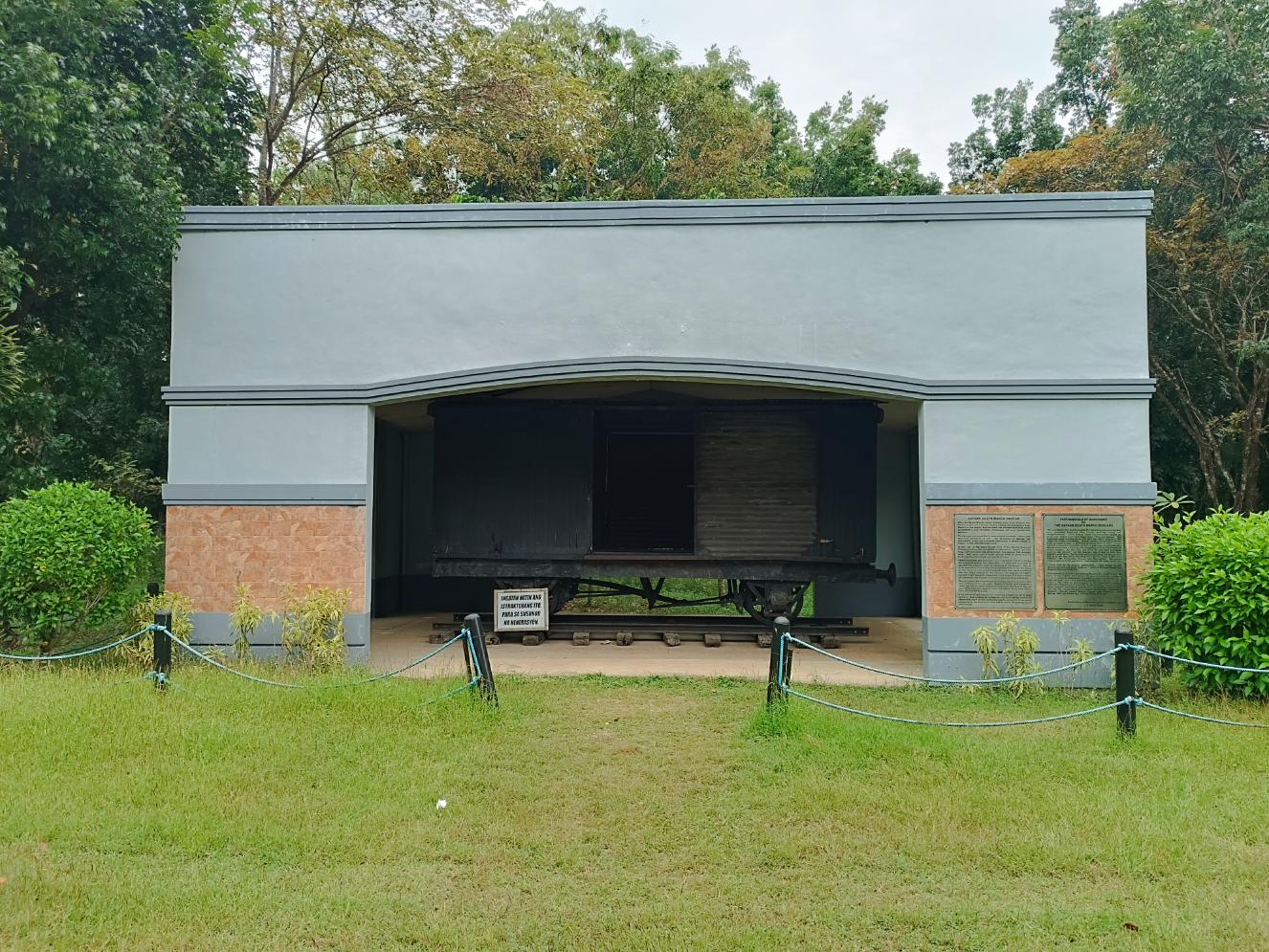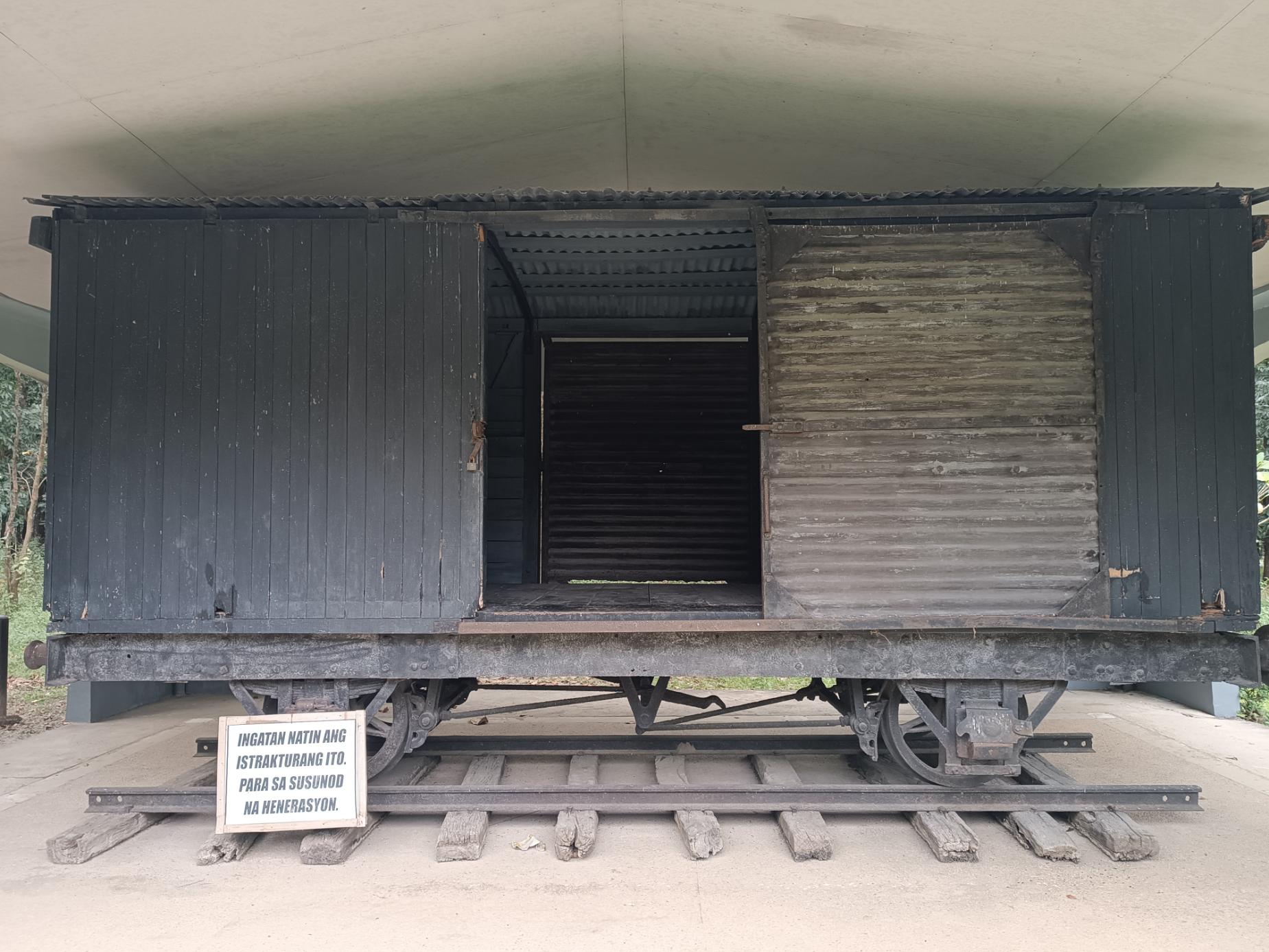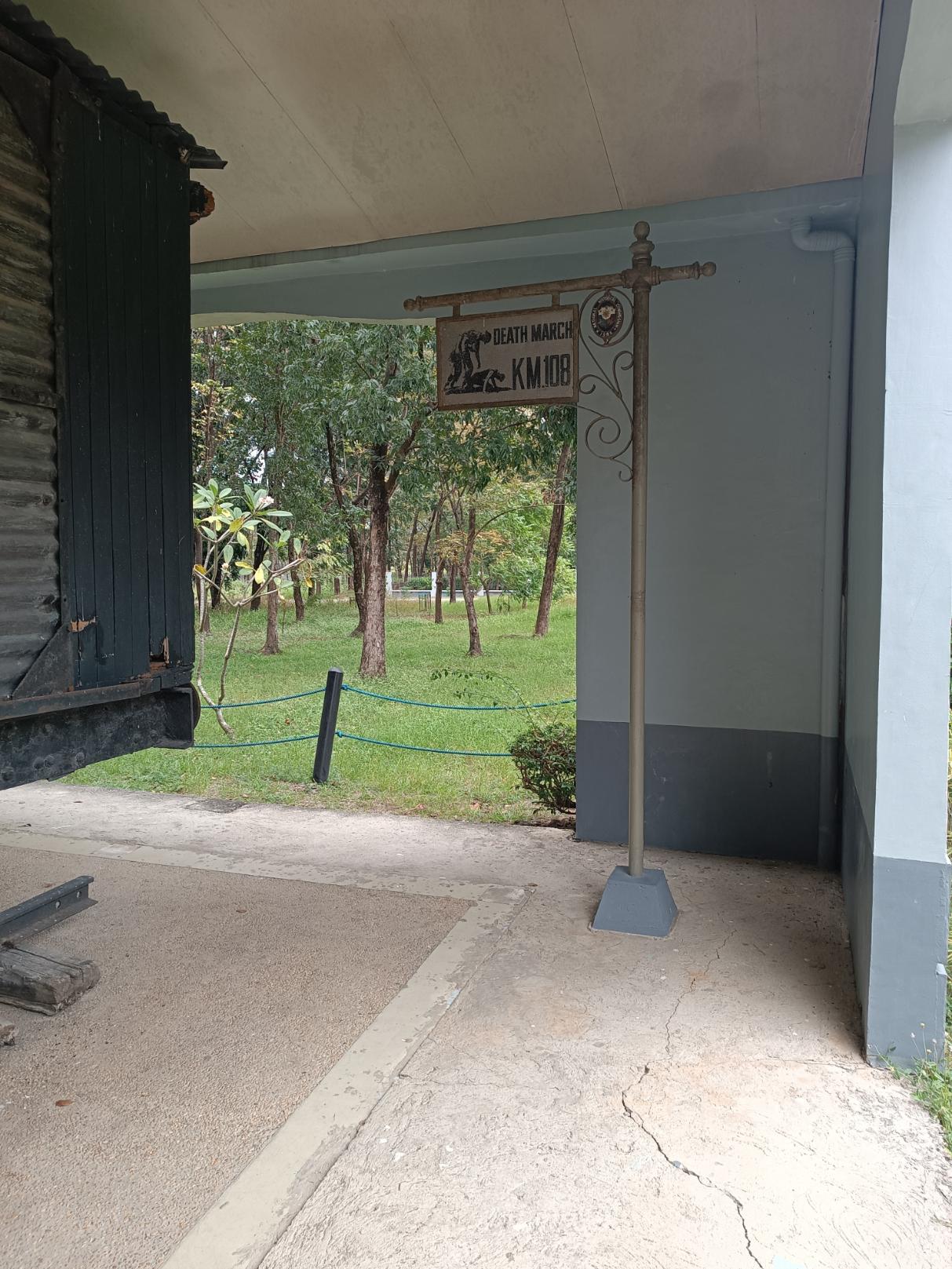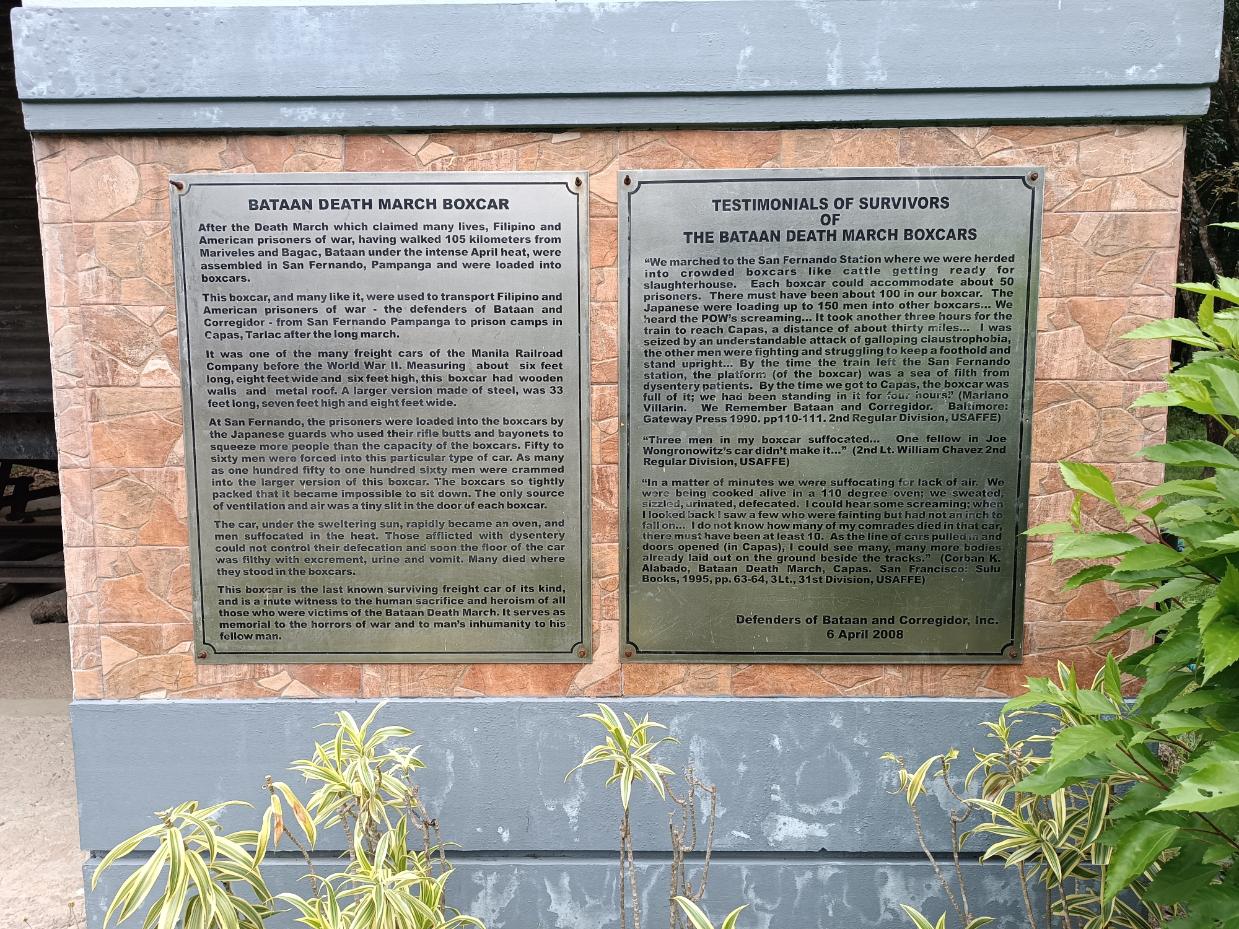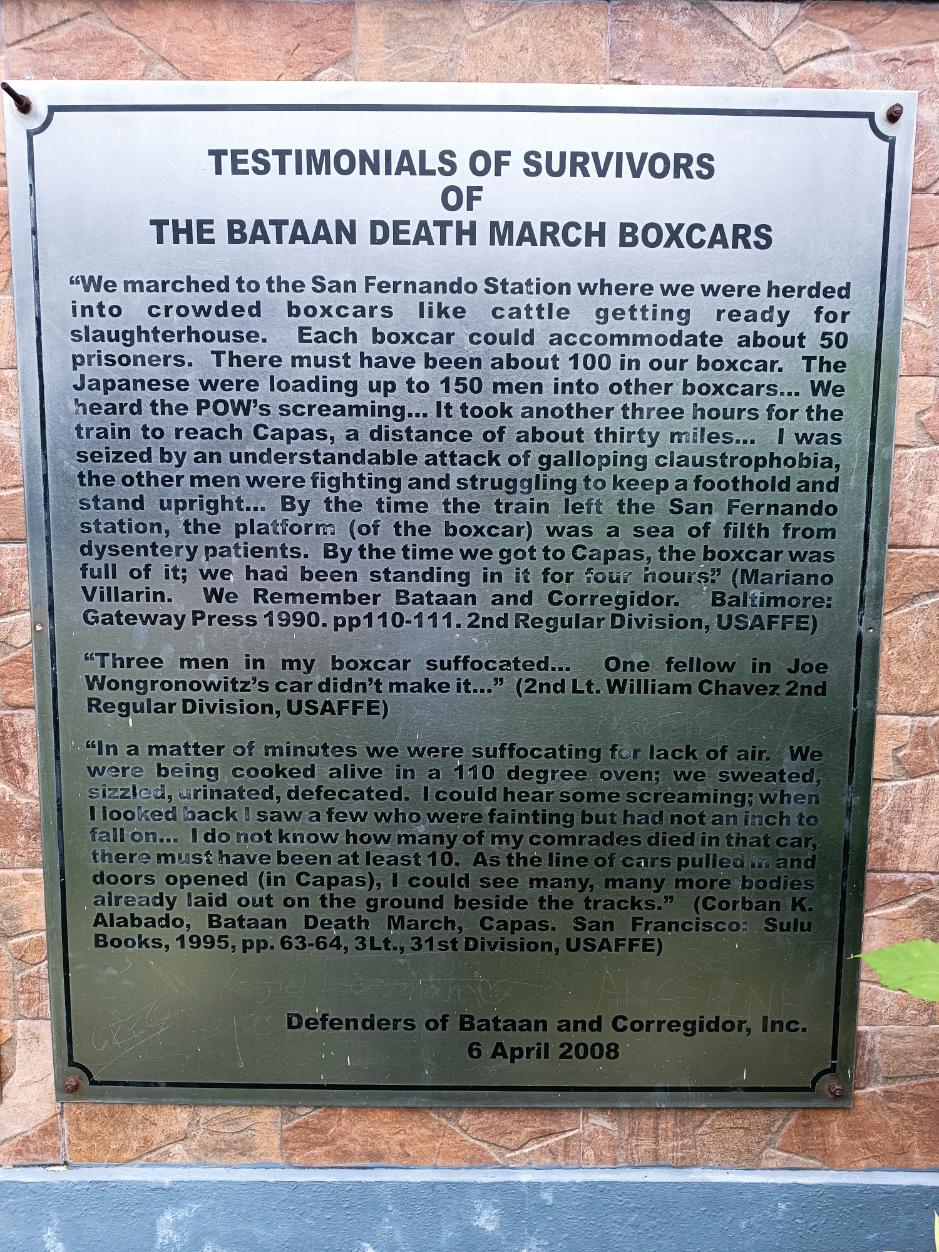Bataan Death March Boxcar
Details:
On a pathway to the west of the tower, approximately 150 m.
Commemorative Object
Monument Text:
Left plaque text:
BATAAN DEATH MARCH BOXCAR
After the Death March which claimed many lives, Filipino and American prisoners of war, having walked 105 kilometers from Mariveles and Bagac, Bataan under the intense April heat, were assembled in San Fernando, Pampanga and were loaded into boxcars. This boxcar, and many like it, were used to transport Filipino and American prisoners of war - the defenders of Bataan and Corregidor - from San Fernando Pampanga to prison camps in Capas, Tarlac after the long march. It was one of the many freight cars of the Manila Railroad Company before the World War II. Measuring about six feet long, eight feet wide and six feet high, this boxcar had wooden walls and metal roof. A larger version made of steel, was 33 feet long, seven feet high and eight feet wide. At San Fernando, the prisoners were loaded into the boxcars by the Japanese guards who used their rifle butts and bayonets to squeeze more people than the capacity of the boxcars. Fifty to sixty men were forced into this particular type of car. As many as one hundred fifty to one hundred sixty men were crammed into the larger version of this boxcar. The boxcars so tightly packed that it became impossible to sit down. The only source of ventilation and air was a tiny slit in the door of each boxcar. The car, under the sweltering sun, rapidly became an oven, and men suffocated in the heat. Those afflicted with dysentery could not control their defecation and soon the floor of the car was filthy with excrement, urine and vomit. Many died where they stood in the boxcars. This boxcar is the last known surviving freight car of its kind, and is a mute witness to the human sacrifice and heroism of all those who were victims of the Bataan Death March. It serves as memorial to the horrors of war and to man's inhumanity to his fellow man.
Right plaque text:
TESTIMONIALS OF SURVIVORS OF THE BATAAN DEATH MARCH BOXCARS
"We marched to the San Fernando Station where we were herded into crowded boxcars like cattle getting ready for slaughterhouse. Each boxcar could accommodate about 50 prisoners. There must have been about 100 in our boxcar. The Japanese were loading up to 150 men into other boxcars... We heard the POW's screaming... It took another three hours for the train to reach Capas, a distance of about thirty miles... I was seized by an understandable attack of galloping claustrophobia, the other men were fighting and struggling to keep a foothold and stand upright... By the time the train left the San Fernando station, the platform (of the boxcar) was a sea of filth from dysentery patients. By the time we got to Capas, the boxcar was full of it; we had been standing in it for four hours.'' (Mariano Villarin. We Remember Bataan and Corregidor. Baltimore: Gateway Press 1990. pp110-111. 2nd Regular Division, USAFFE) "Three men in my boxcar suffocated... One fellow in Joe Wongronowitz's car didn't make it..." (2nd Lt. William Chavez 2nd Regular Division, USAFFE) "In a matter of minutes we were suffocating for lack of air. We were being cooked alive in a 110 degree oven; we sweated, sizzled, urinated, defecated. I could hear some screaming; when I looked back I saw a few who were fainting but had not an inch to fall on... I do not know how many of my comrades died in that car, there twist have been at least 10. As the line of cars pulled in and doors opened (in Capas), I could see many, many more bodies already laid out on the ground beside the tracks." (Corban K. Alabado, Bataan Death March, Capas. San Francisco: Sulu Books, 1995, pp. 63-64, 3Lt., 31st Division, USAFFE)
Defenders of Bataan and Corregidor, Inc.
6 April 2008

